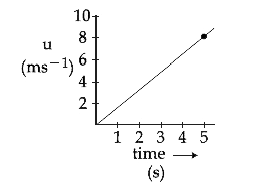A narrow beam of alpha particles with kinetic energy T==0.50MeV falls normally on a golden foil whose t=mass of thickness is ρd=1.5mg/cm2 The beam intensity is I0=5.0.105 particles per second. Find the number of alpha particles scattered by the foil during the time interval τ=30 m in into the angular interval:
(a) 59−61∘ , (b) over θ0=60∘.
(a) From Eqn. (6.1b) we get
dN=I0τρ.d.NAAAu(Ze2(4πε0)2T)22πsinθdθsin4θ/2
(we have used dΩ=2sinθdθ and N=I0I)
From the data dθ=2∘=257.3radian
Also ZAu=79,AAu=197. Putting the value we get
dN=1.63×106
(b) This number is
N(θ0)=I0τ(ρdNAAAu)(Ze2(4πε0)2T)24π∫xθ0cosθ2dθsin3θ2 The integal is
2∫1sinθ02dxx2=12[−12x2]1sinθ02=cot2θ02
Thus N(θ0)=πnd(Ze2(4πε0T))2I0τcot2θ02 ltbr where n is the concentration of nuclei in the foil. (n=ρN1/AAu)
Substitution gives
N(θ0)=2.02×107
Topper's Solved these Questions
- ATOMIC AND NUCLEAR PHYSICSBook:IE IRODOV, LA SENA & SS KROTOVChapter:ATOMIC AND NUCLEAR PHYSICSExercise:Wave Properties Of Particle
Explore 48 Videos
- ATOMIC AND NUCLEAR PHYSICSBook:IE IRODOV, LA SENA & SS KROTOVChapter:ATOMIC AND NUCLEAR PHYSICSExercise:Properties Of Atom
Explore 69 Videos
- DIRECT CURRENTBook:IE IRODOV, LA SENA & SS KROTOVChapter:DIRECT CURRENTExercise:All Questions
Explore 15 Videos
Similar Questions
A narrow beam of protons with kinetic energy T=1.4meV falls normally on a brass foil whose mass thickness ρd=1.5mg/cm2. The wavelength ratio of copper and zinc in the foil is equal to 7:3 respectively. Find the fraction of the protons scattered through the angles exceeding θ0=30∘.
View SolutionA narrow beam of alpha particles with kinetic energy T=600keV falls normally on a golden foil incorporating n=1.1.1019 nuclei/cm2. Find the fraction of alpha particles scattered thtough the angles θ<θ0=20∘
View SolutionA narrow beam of alpha particles with kinetic energy T=0.50MeV and intensity I=5.0.105 particles per second falls normally on a golden foil. Find the thickness of the if at a distance r=15cm from a scattering section of that foil the flux density of scatteered particles at the angle θ=60∘ to the incident beam is equal to J=40 particles/(cm2.s).
View SolutionAn alpha particle with Kinetic energy 0.27MeV is deflected through an angle of 60∘ by a golden foil. Find the corresponding value of the aiming parameter.
View SolutionFind the quality factor of a mathematic pendulum l=50cm long if during the time interval τ=5.2 min its total mechanical energy decreases η=4.0.104 times.
View SolutionA narrow beam of alpha particles with kinetic energy 1.0MeV falls normally on a platinum foil 1.0μ thick. The scattered particles are observed at an angle of 60∘ to the incident beam direction by means of a counter with a circular inlet area 1.0cm2 located at the distacne 10cmfrom the scattering section of the foil. What fraction of scattered alpha particles reaches the counter inlet?
View SolutionThe speed verses time graph for a particle is shown in the figure. The distance travelled (in m) by the particle during the time interval t = 0 to t = 5 s will be __________

View SolutionA particle is moving along the x-axis such that s=6t−t2, where s in meters and t is in second. Find the displacement and distance traveled by the particle during time interval t=0 to t=5s.
View SolutionA narrow beam of protons with velocity v=6.106m/s falls normally on a silver foil of thickness d=1.0μm. Find the probability of the protons to be scattered into the rear hemisphere (θ>90∘).
View SolutionA narrow beam of alpha particles falls normally on a silver foil behind which a counter is set to register the scattered particles. On substraction of platinum foil of the same mass thickness for the silver foil, the number of alpha particles registered per unit time increased η=1.52times. Find the atomic number of platinum, assuming the atomic number of silver and the atomic masses of both platinum and silver to be known.
View Solution

